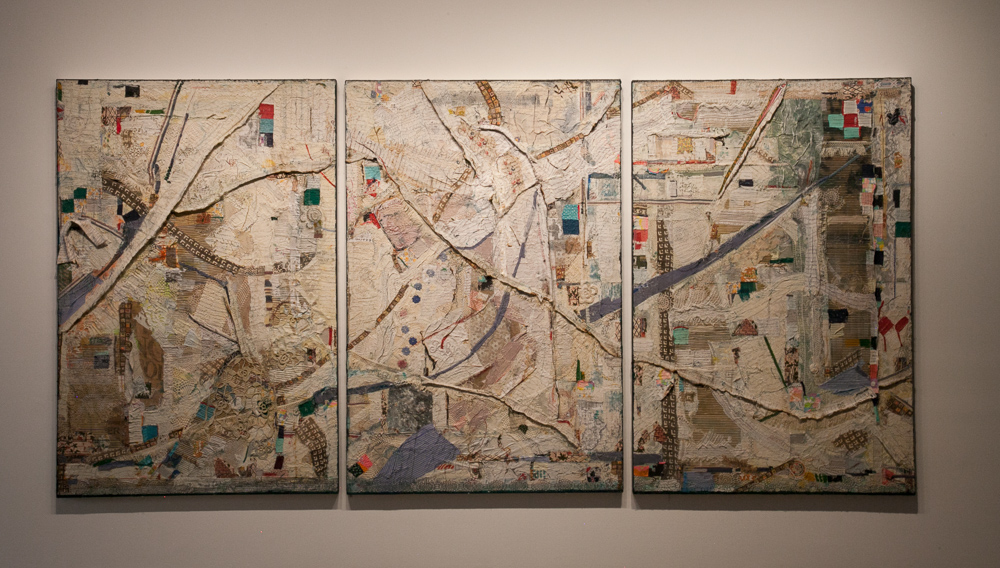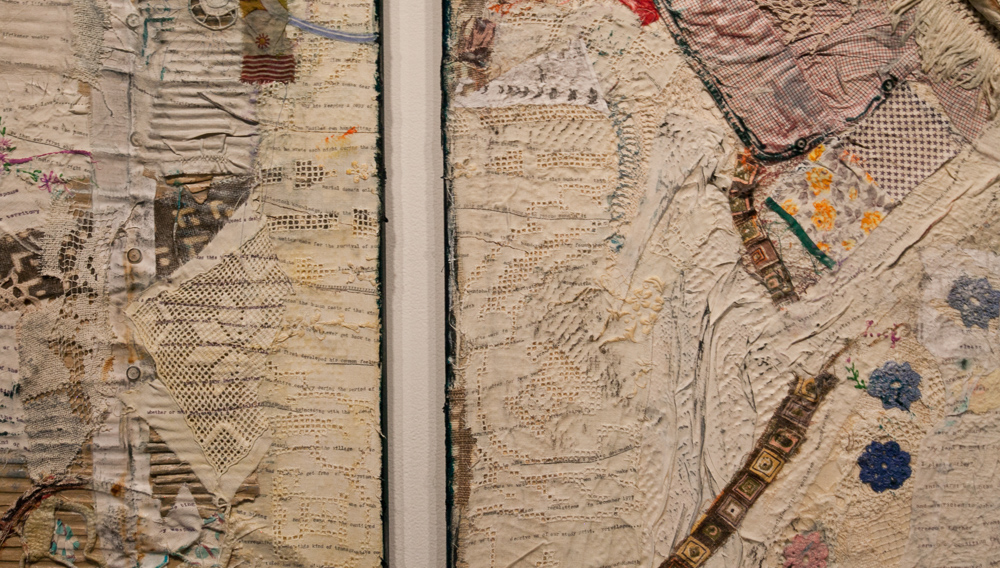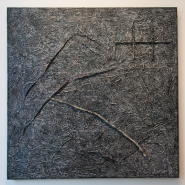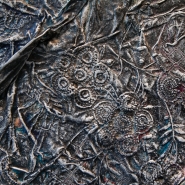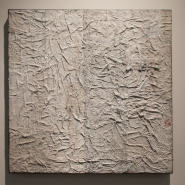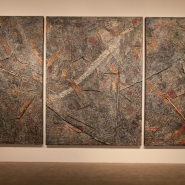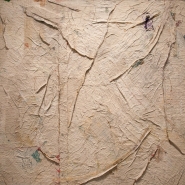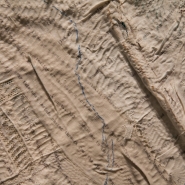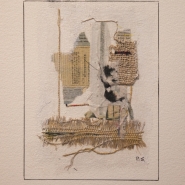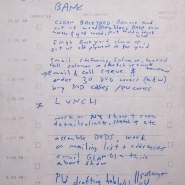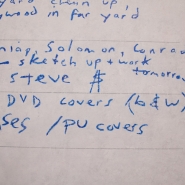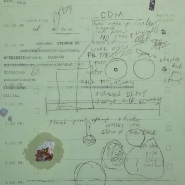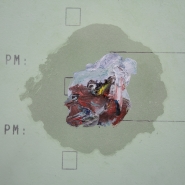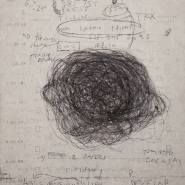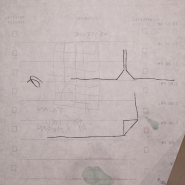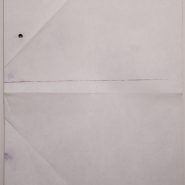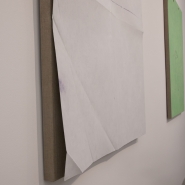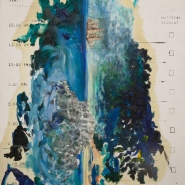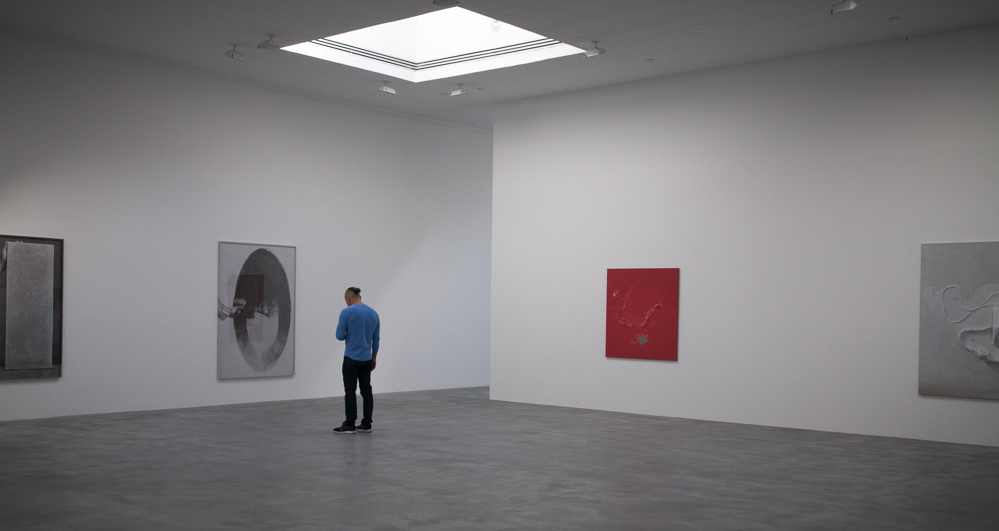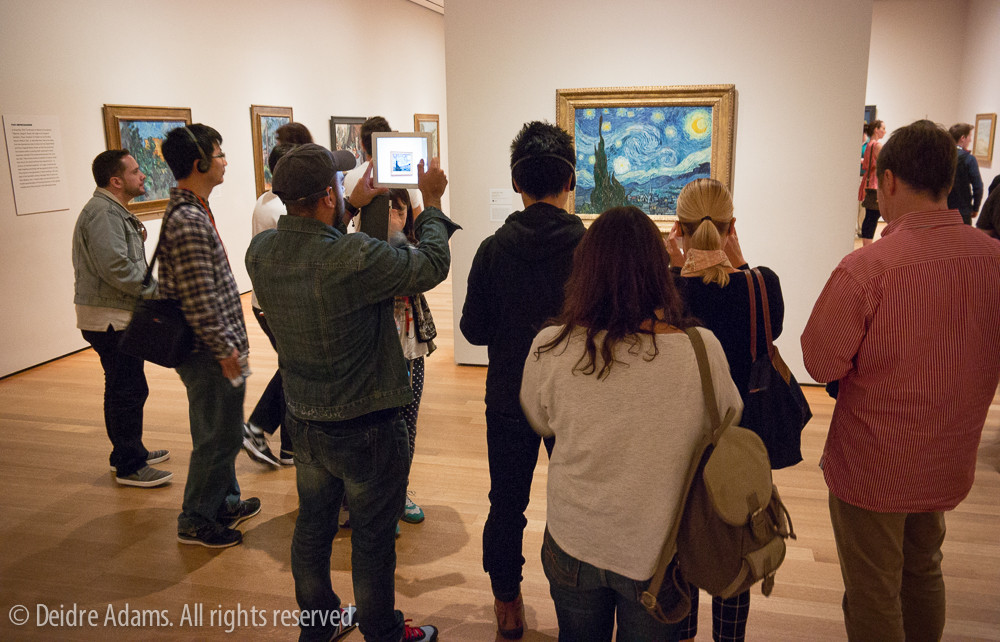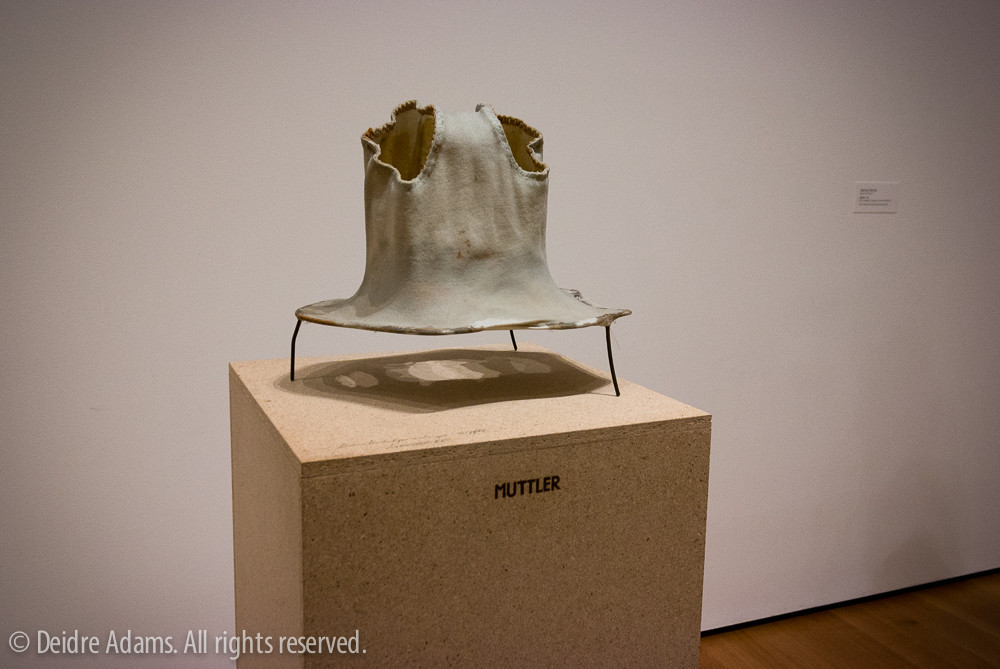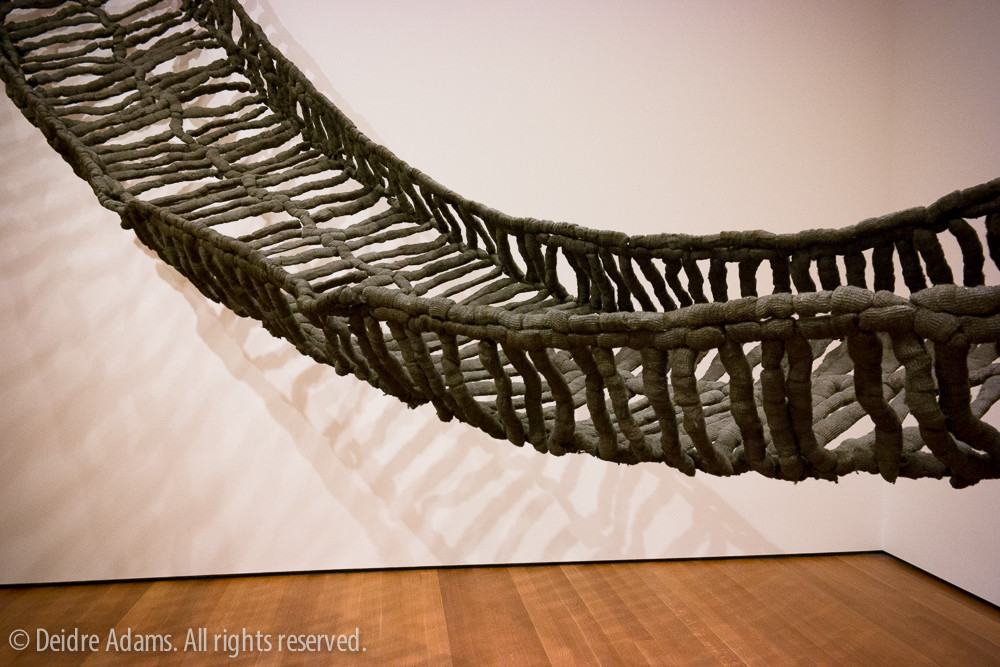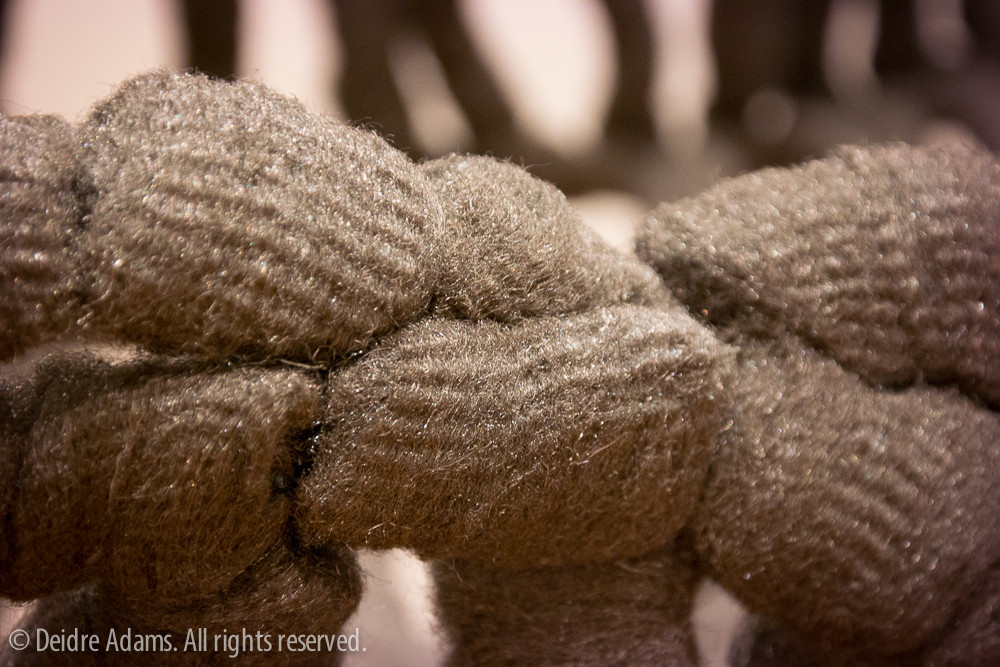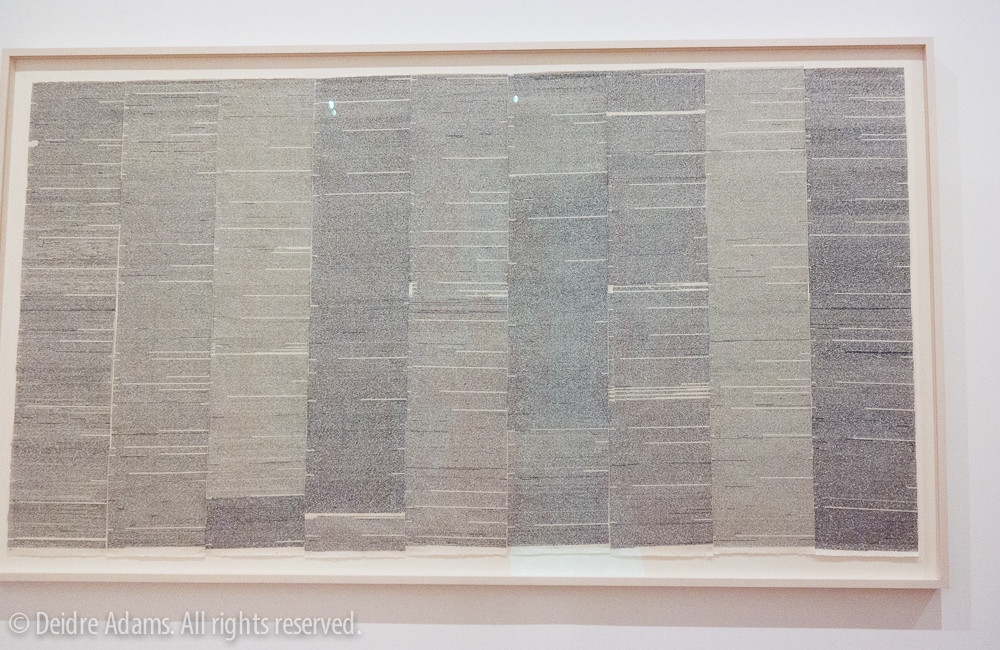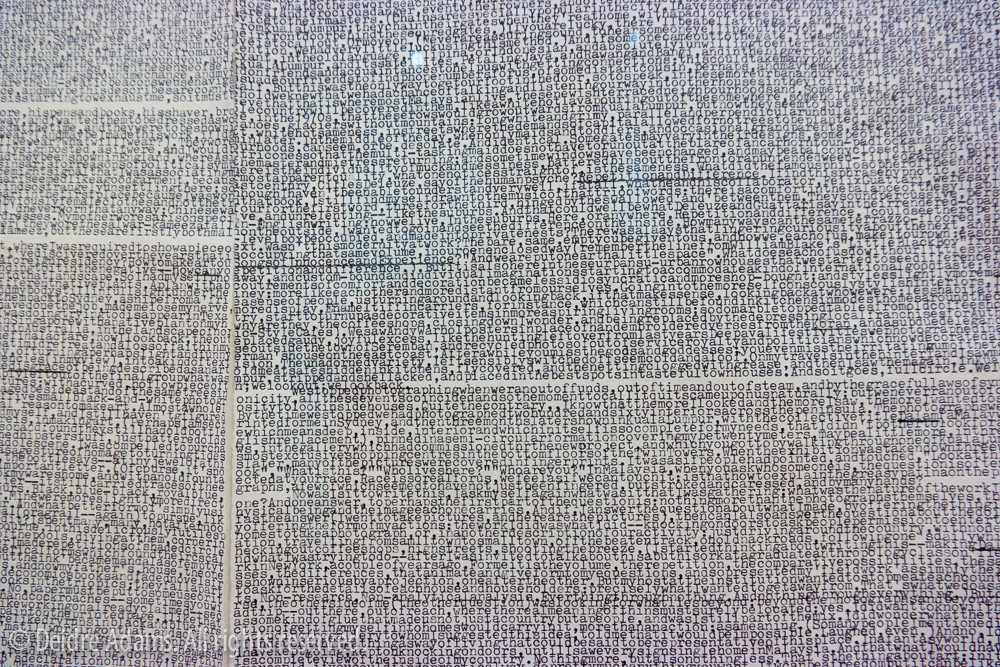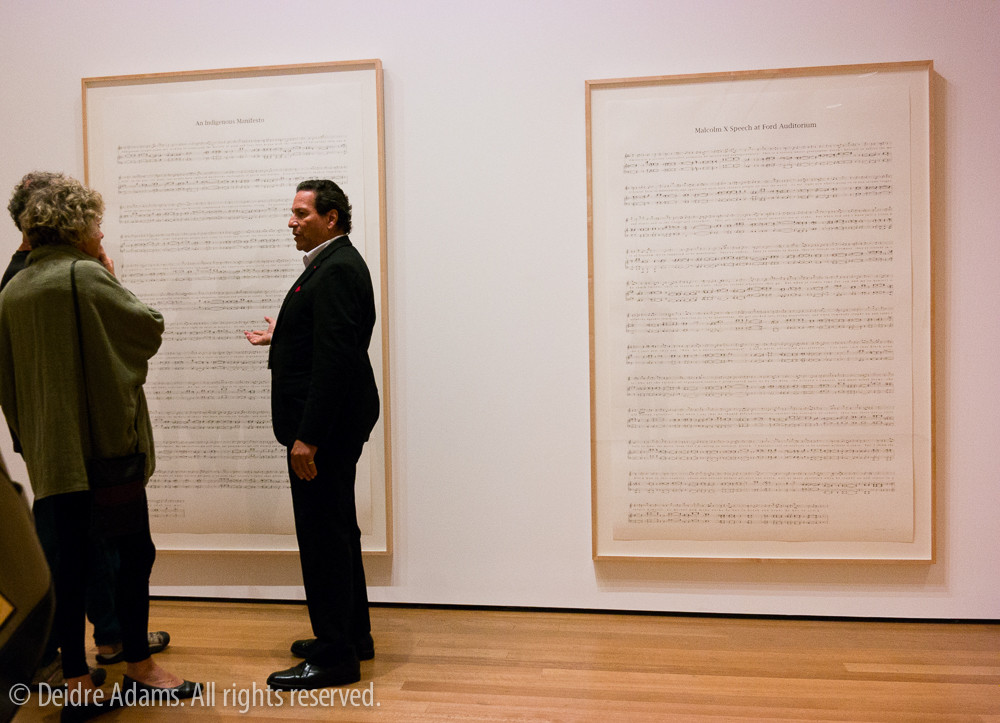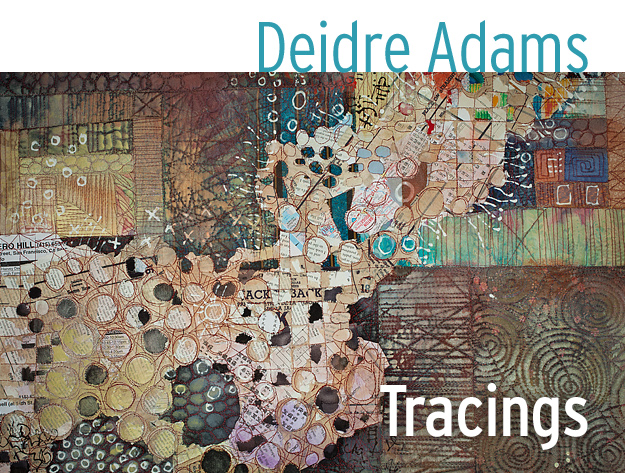Random stuff I saw in NYC – part II
A small sampling of Chelsea galleries
Peter Sacks: Aftermath
Robert Miller Gallery, 524 W 26 St., New York
The first thing you notice about these paintings (or collages? or constructions?) is their monumental size, drawing you in even from the street. Then there’s the texture – what’s that all about? So you have to go in and take a closer look, and there, you will not be disappointed. The texture is all from physical objects: Shirts complete with collars and buttons, crocheted doilies and other frou-frou lacey and fringey household things, corrugated cardboard, chunky blocks, and lengths of fabric upon which the artist has typewritten passages from texts of interest to him. All of it is pressed down onto a canvas, stiffened with some kind of medium, and in some cases painted over to obscure most of the original color, but in some cases left as is. The result is a mesmerizing visual feast.
From the press release:
Sacks uses an original, almost ritualistic technique of combining painting, adhesion, typewriting, burning, and compressing so that the works resemble archaeological sites or debris fields. He evokes a shared history of suffering, displacement, imprisonment and exile, all implicit themes that were drawn from Sacks’ experiences in South Africa and ongoing in our world at large.
Sacks applies multiple layers of materials on canvas, such as handmade lace, cloth, and threadwork, corrugated cardboard, clothing, shrouds, prison shirts, fishing nets, which he transforms by burning or painting over. Where they include textual elements, these are hand-typed by the artist on fabric using a manual typewriter and then incorporated into the overall matrix. Through this process, the artist alters our understanding of the medium of painting itself. From a distance, the canvases read as abstract and painterly, but close up, they abound with astonishing and vertiginous detail. Rigorously formal, they are at once encyclopedic yet intimate, creating a series of highly charged encounters.
Sacks has a very good website with great zoomable photos of lots more work plus reviews and downloadable catalogs of past shows.
Eric Wesley: Daily Progress Status Reports
Bortolami Gallery, 520 W. 20th St., New York
This show consists of a series of 20 48×37-inch works with a limited color scheme. They look like oversize pieces of heavy paper complete with doodles, sketches, spills, folds, and other markings, but the medium is listed as oil and/or acrylic on aluminum. There are some impressive trompe l’oeil effects, like the oil paint blob with its surrounding stain. The paintings’ sketchy, impromptu appearance is fresh and appealing, possibly belying what may be a much more rigorous process. It appears that the artist wanted to indulge in exploring a multitude of techniques and styles, and he created the “Daily Progress Status Reports” device as a underlying unifying theme — although in some cases the Progress Report is missing entirely, as though he just got so caught up in the joy of making a painting that he covered it completely. From the press release:
An artist who often thematizes various rubrics of success and failure, Wesley’s newest works are large paintings that depict “Daily Progress Status Reports.” Each DPS is a blank form for assigning and evaluating the efficiency of a workday; broken up by the hours of the day (from 10:00 am and 6:00 pm), it has space for delegating an “assignment” for each hour and a box to note whether or not these tasks have been finished satisfactorily. Wesley’s paintings show these DPS worksheets after they have been “completed”: scribbled on, evaluated, crumpled up, stained, faded and folded.
Wesley constantly reinvents his means of working — each body of work bears little if any resemblance to previous projects — and for these new works he experiments with ”trade secrets” of painting, using oils, acrylics, airbrushing and various methods of screenprinting and stenciling. The painstaking trompe-l’œil technique at which he ultimately arrived contrasts extravagantly with the apathy and ennui which the marks on each form convey, making the exhibition a droll meditation on artistic labor and the constant demand to be productive.
Antony, Jorge Queiroz, Kara Walker, Marc Handelman, Marlene McCarty
Sikkema Jenkins & Co., 530 W. 22nd St., New York
This was a group show of five artists, but evidently I only found two of them interesting enough to take pictures of. More information on the group show is here.
By far my favorite of anything I saw in the galleries are these smallish (9×13 or so), delicate mixed media pieces by an artist who just goes by the name Antony, thus making him a bit difficult to Google. Antony also has a “critically acclaimed musical career as a singer and composer.” His musical career proved more easily researchable. As far as I can tell, he doesn’t have his own web site for his art work, but you can read an interview of this “future feminist” and see more of his work here. These particular works are “made from found, and sometimes ephemeral materials that reference the natural world and our relationship to it.” There is no information regarding the materials used other than “mixed media.”
 Antony, Untitled, 13 x 9.75 inches, mixed media
Antony, Untitled, 13 x 9.75 inches, mixed media
 Antony, Untitled, 8 x 10.625 inches, mixed media
Antony, Untitled, 8 x 10.625 inches, mixed media
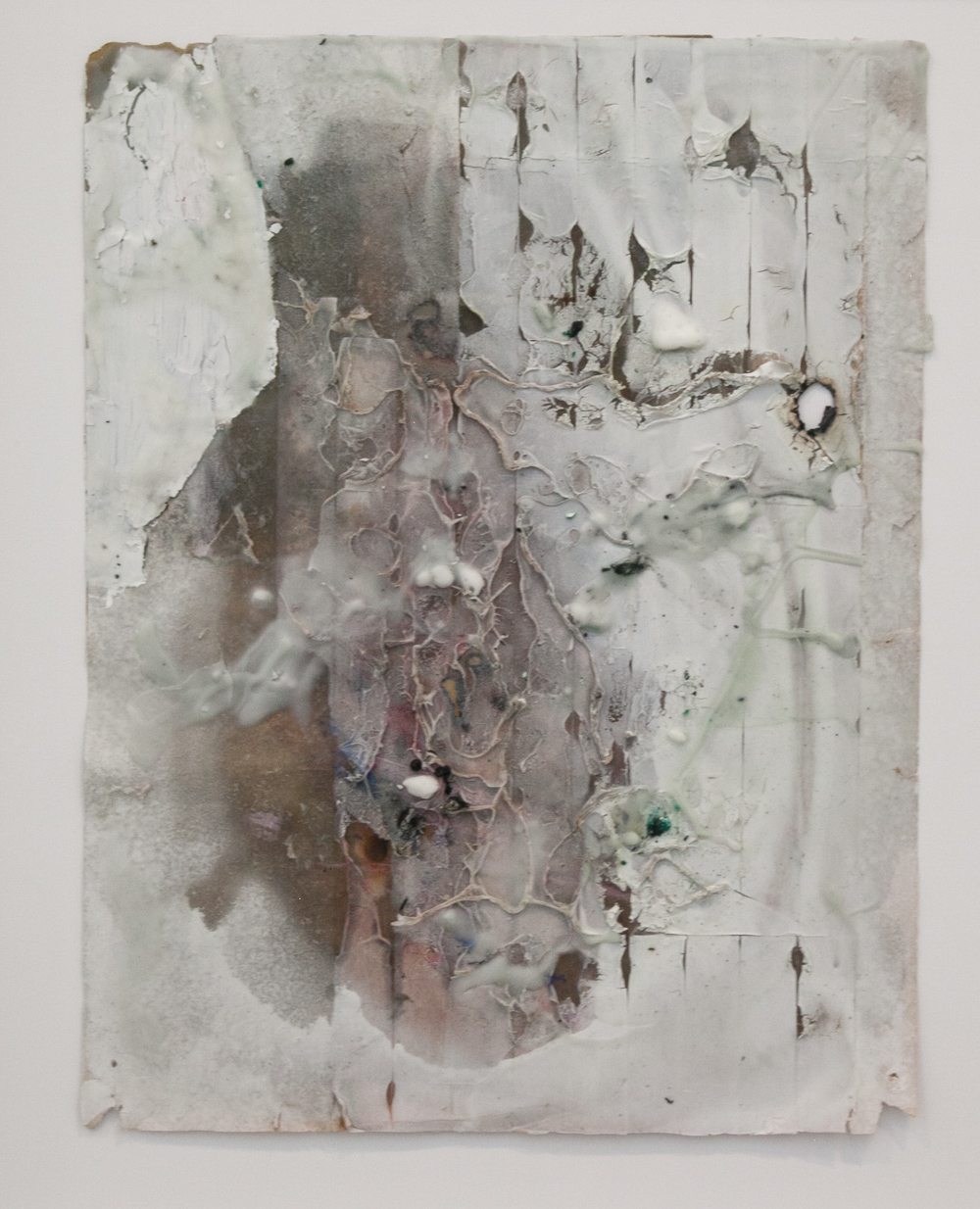 Antony, Untitled, 13 x 10.25 inches, mixed media
Antony, Untitled, 13 x 10.25 inches, mixed media
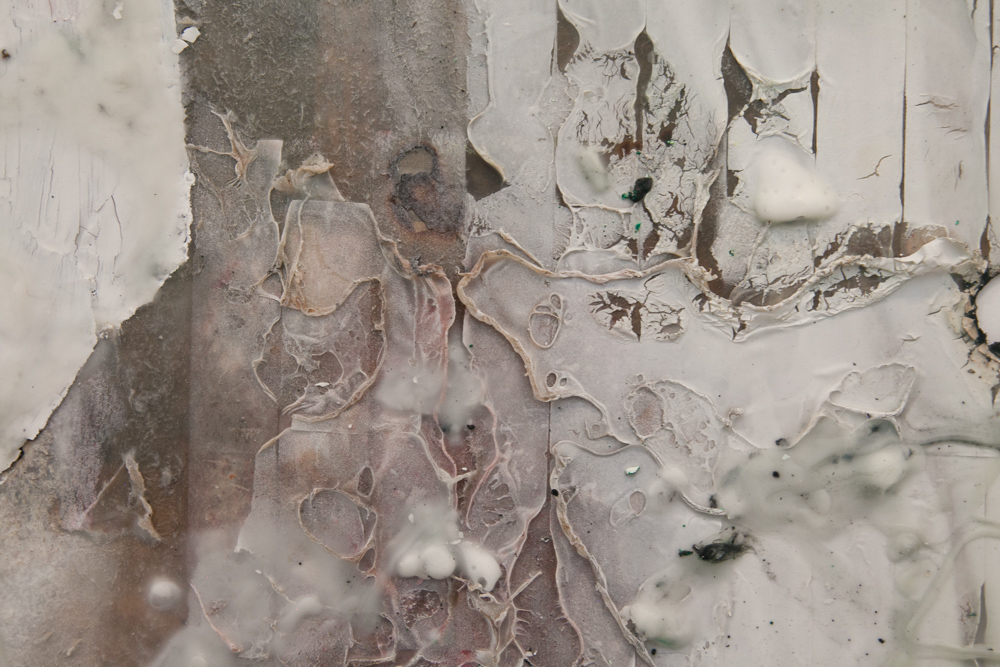 Antony, Untitled, detail
Antony, Untitled, detail
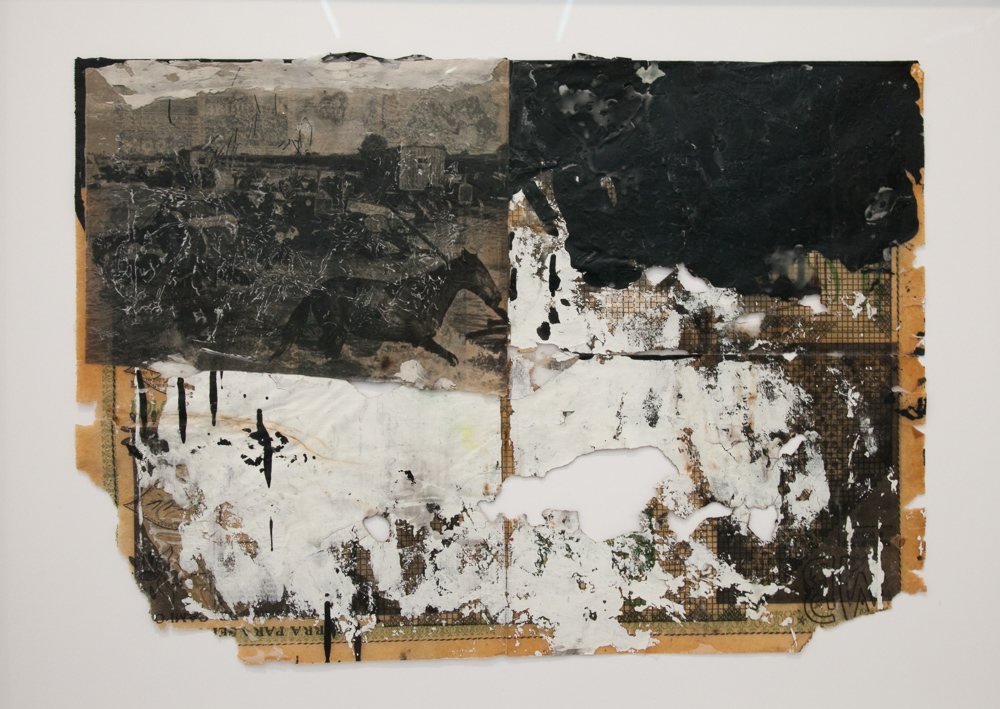 Antony, Untitled, 16 x 22.125 inches, mixed media
Antony, Untitled, 16 x 22.125 inches, mixed media
I also liked these large-scale graphite and ballpoint pen drawings by Marlene McCarty. These drawings “represent the final gesture to her earlier body of work known as the Murder Girls, a series of monumental portraits of teenage girls who had committed murder.”
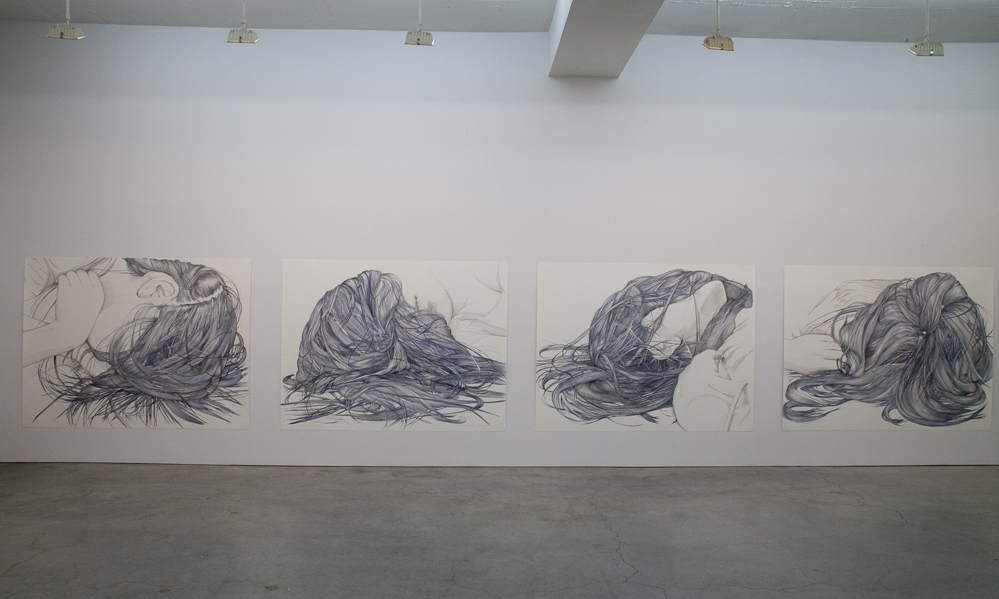 Mary McCarty, installation view
Mary McCarty, installation view
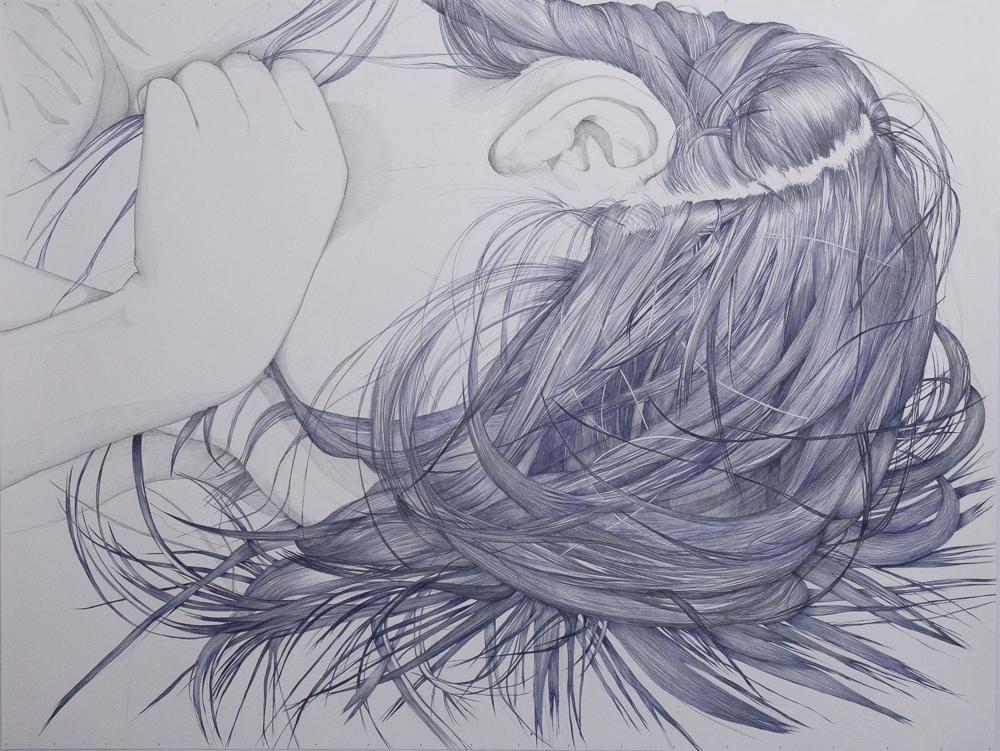 Marlene McCarty, 14, 71 x 94 inches, graphite and ballpoint pen on paper
Marlene McCarty, 14, 71 x 94 inches, graphite and ballpoint pen on paper
Note the interesting hanging method.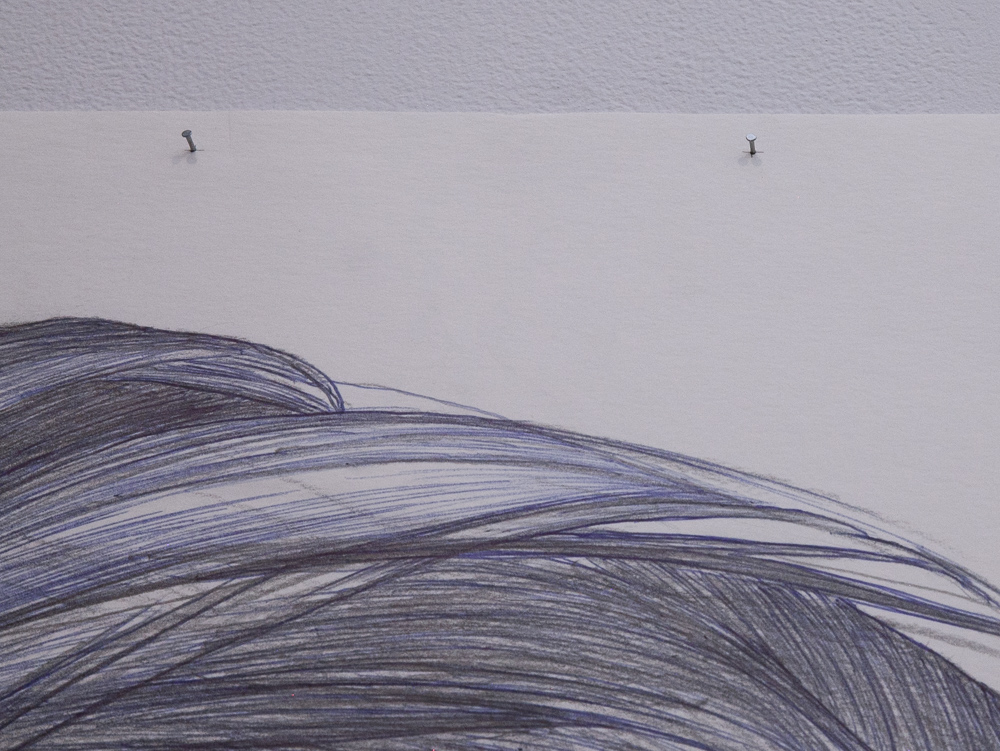
Paul Sietsema at Matthew Marks Gallery
522 W. 22nd St., New York
“Sietsema’s works address the production, consumption, and proliferation of cultural objects and the systems in which these objects circulate. One work, addressing the idea of transfer between the artist and viewer, portrays a phone with its receiver lying beside it. Another depicts a red expanse of paint with exposed areas of raw linen. The image, which resembles a materialist painting in the vein of Arte Povera, suggests that paint can make its own forms. The exposed linen sets the rendered image of paint beside the actual material of painting.”
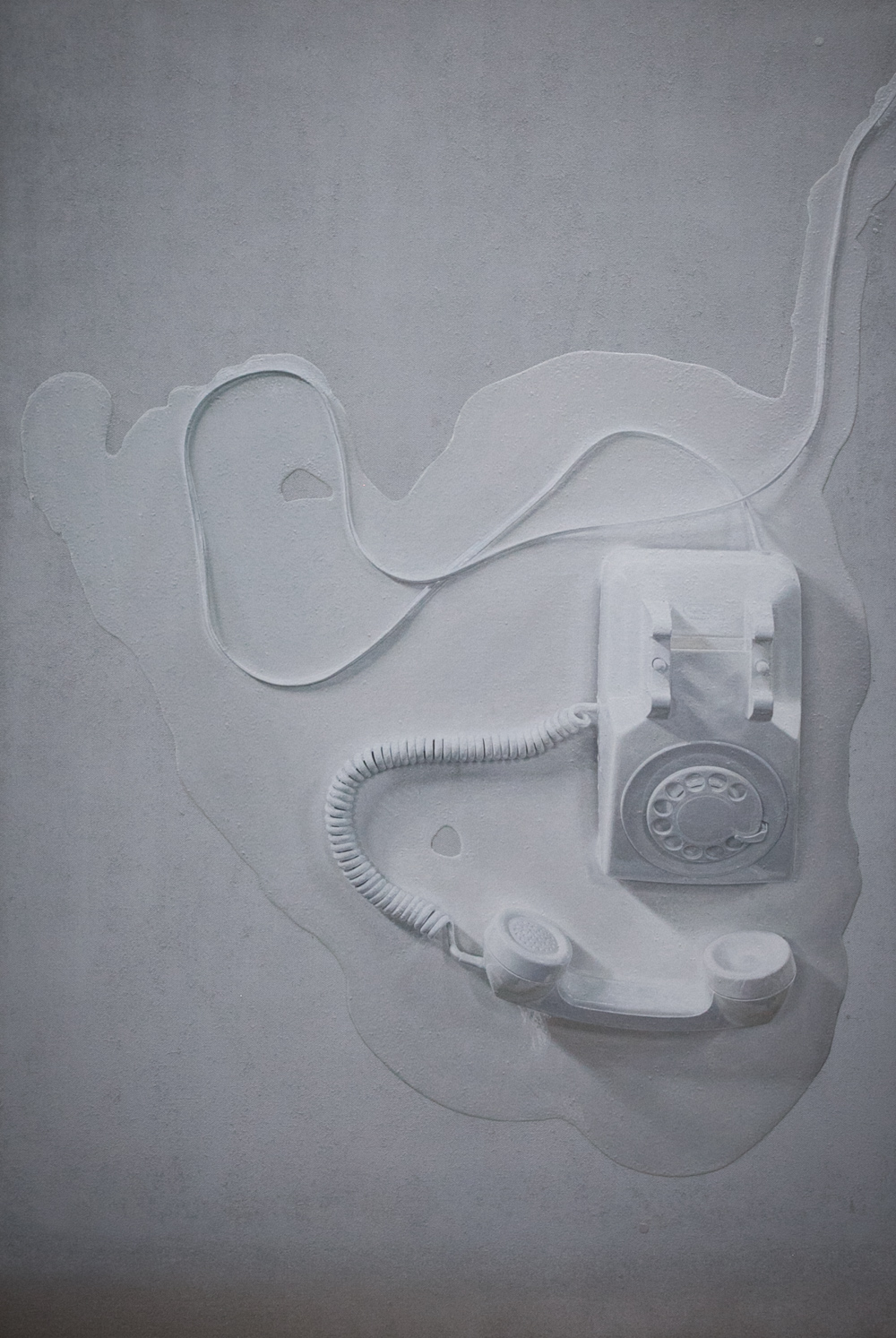 Paul Sietsema, White Painting, 69 x 46 inches, enamel on linen
Paul Sietsema, White Painting, 69 x 46 inches, enamel on linen
 Paul Sietsema, White Painting – detail
Paul Sietsema, White Painting – detail
This is getting way too long, so I’ll break here. More to follow tomorrow.

